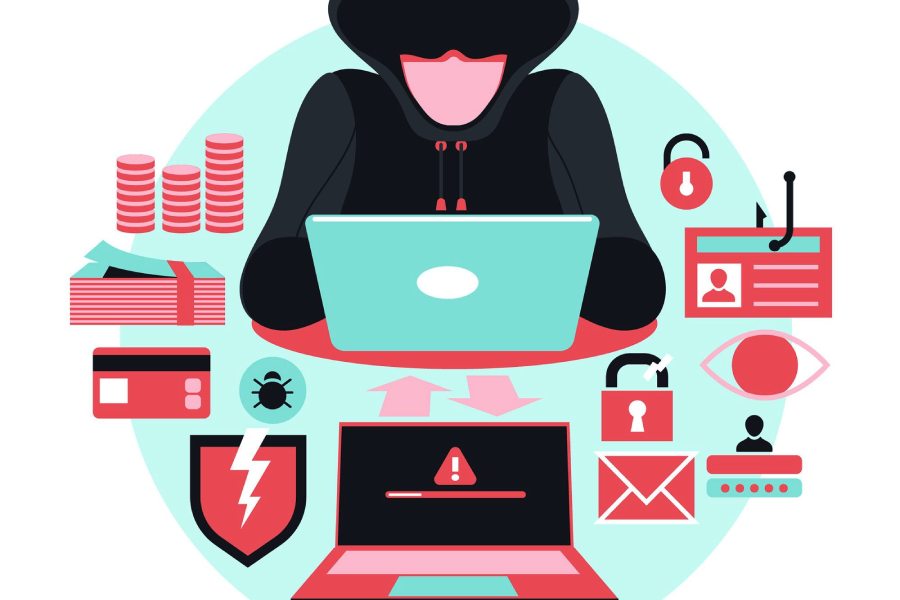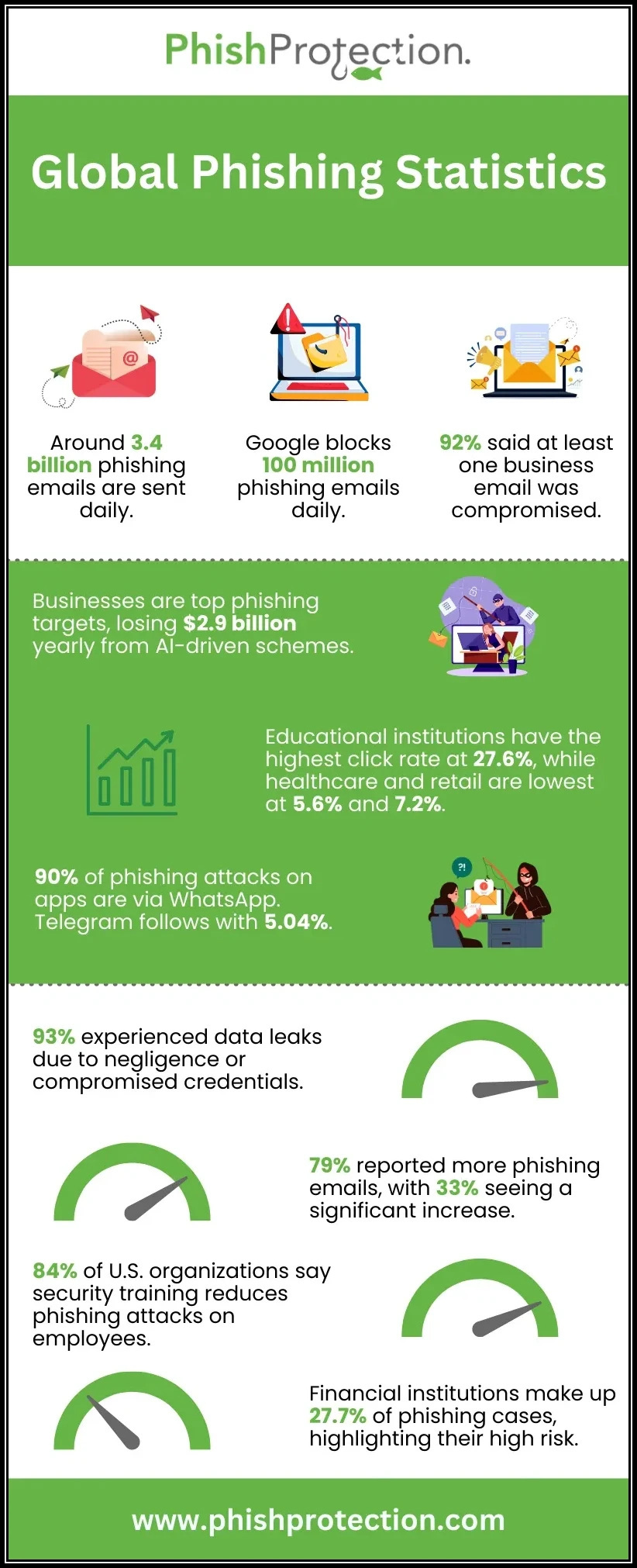Though phishing has its origins in the mid-1990s, it has gained tremendous relevance today. The entire business world relies on email as its prime communication channel. As email traffic has increased over the years, so have phishing attempts. Hence, it becomes essential for IT and Email admins to be constantly on their toes and keep employing innovative strategies to keep phishing at bay. The following Email Security and Phishing Safety Guide endeavors to touch upon these aspects.
Statistics To Give You An Idea About The Menace
Before proceeding into the details, here are some spine-chilling statistics that tell about the gory picture threat actors have painted using phishing as their modus operandi.
- Emails are responsible for 96% of all phishing attack.
- Phishing has overtaken malware as the leading threat used in unsafe websites. As of January 17, 2021, Google has identified 2.14 million phishing websites, an increase of 27% over 12 months (1.69 million as of January 19, 2020).
- About 75% of organizations globally experienced some kind of phishing attack in 2020.
- Of all the data compromised in phishing attacks, the prominent ones include personal credentials and data, internal data, medical info, and bank details.
- The manufacturing industry was the most favored target in 2020.
- Of all the brands impersonated in a phishing attack, Microsoft heads the list with 43%, followed by DHL with 18%.
Factors That Continue To Jeopardize Organizations’ Security
Though many global organizations have started to email security tools seriously, it still has not come into the mainstream to protect the enterprise’s information assets. The attack techniques keep evolving, and organizations need to adopt measures to thwart these attacks effectively.
The prime example is that of BEC or Business Email Compromise. This type of cyberattack was unheard of several years ago. Today, it is on par with ransomware in terms of monetary loss to organizations.
The following points reveal why every organization, whether it is an MNC or an SMB, must adopt a robust security strategy.
- Proofpoint sources reveal a 22% chance that any organization would experience a data breach involving a minimum of 10,000 records within the following 24 hours.
- Osterman Research points out that only 31% of business organizations worldwide have a specific budget for data breach mitigation.
- The same research also highlights that 75% of organizations would take up to weeks to detect a data breach.
The Top Email Fraud Tactics Today
Before discussing the email security guide, let us look at some of the top email fraud tactics employed by cybercriminals today.
Business Email Compromise – Also known as CEO fraud or Impostor mail
This attack involves email spoofing, where the malicious actor changes the reply-to email address to trick employees into thinking that the email has originated from within the organization.
Using innovative subject lines
Generally, you find phishing messages with ‘clickbait’ subject lines. BEC involves sending messages that demand urgency in response. Email admins should take note of such aspects while defining protective strategies.
Using advanced malware
One prime example of using advanced malware is sandboxing that works by running suspect codes from URLs and attachments in a virtual environment.
Outbound Phishing
While email admins concentrate on inbound phishing attacks, outbound phishing has become one of the most preferred modes for cyber adversaries. Such attacks spoof corporate/brand identities to solicit confidential info, data, or money from customers and business suppliers.
Outbound phishing attacks can destroy the organization’s reputation as it discourages people from interacting with your brand.
Build A Robust Email Security Strategy
Though every individual has to be aware of phishing tactics employed by criminals and follow email security requirements, IT admins should formulate effective email security strategies for others to follow.
Enhance the visibility levels to identify the threats
Defending your organization from email attacks will remain a challenge unless you know the threats you face. The first step towards enhancing your visibility is to collect robust threat intelligence that can help detect malicious emails. Besides, you should know who the soft targets are and the type of information that cyber attackers are looking for. An accurate threat analysis can help formulate the ideal strategy to mitigate the risks associated with phishing attacks.
Deploying core email controls and content analysis to spot malicious content easily
IT admins should maintain control over the email messages that get into the organization’s environment. Looking for spam messages is one aspect, but you should concentrate on other messages that target the employees. It could include bulk emails, BEC attacks, credential phishing, adult content, etc. Your email classification tool should have advanced sandboxing capabilities to analyze all email attachments and URLs in real-time. It will help you to spot malicious content better.
Authenticating your email is crucial
We have discussed how outbound phishing can damage an organization’s reputation. The recommended way to mitigate such risks is to authenticate your emails by using tools like DMARC. It ensures that your legitimate emails are correctly authenticated, using SPF and DKIM standards. It blocks fraudulent emails from domains under your organization’s control. The email authentication process reveals who is sending emails on your behalf. Thus, it can help organizations protect their brand reputation.
Data Loss prevention is critical
While preventing threats from entering your domain is essential, your email strategy should prevent sensitive data from leaving your gateway. Employing Data Loss prevention measures and encryption can help to protect the leakage of sensitive information.
Respond to email security threats in real-time
Email threats keep evolving daily. No email security vendor can claim to identify every threat and mitigate it. If it were so, there would not be any phishing activity today. This is why every organization should adopt email security measures for responding to threats in real-time. It sends the signal that the organization is prepared to tackle all types of threats quickly and effectively.
Final Words
While phishing emails are poised to increase in the future, every organization and individual should be prepared to effectively identify and handle such threats. Employee education and phishing awareness training are crucial for every organization today to mitigate the threats effectively. Simultaneously, IT admins have their work cut out as they have to formulate robust email security strategies to keep these malicious actors at bay.



